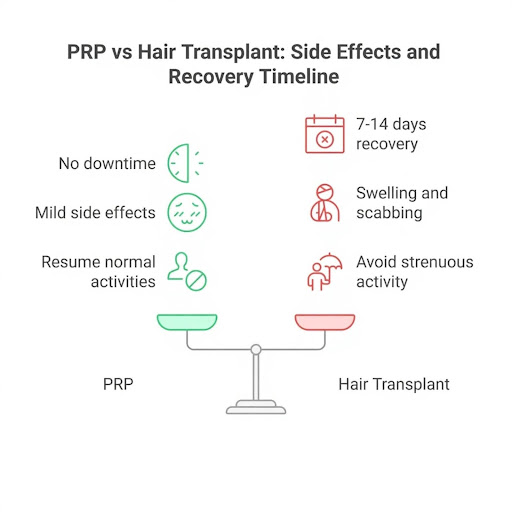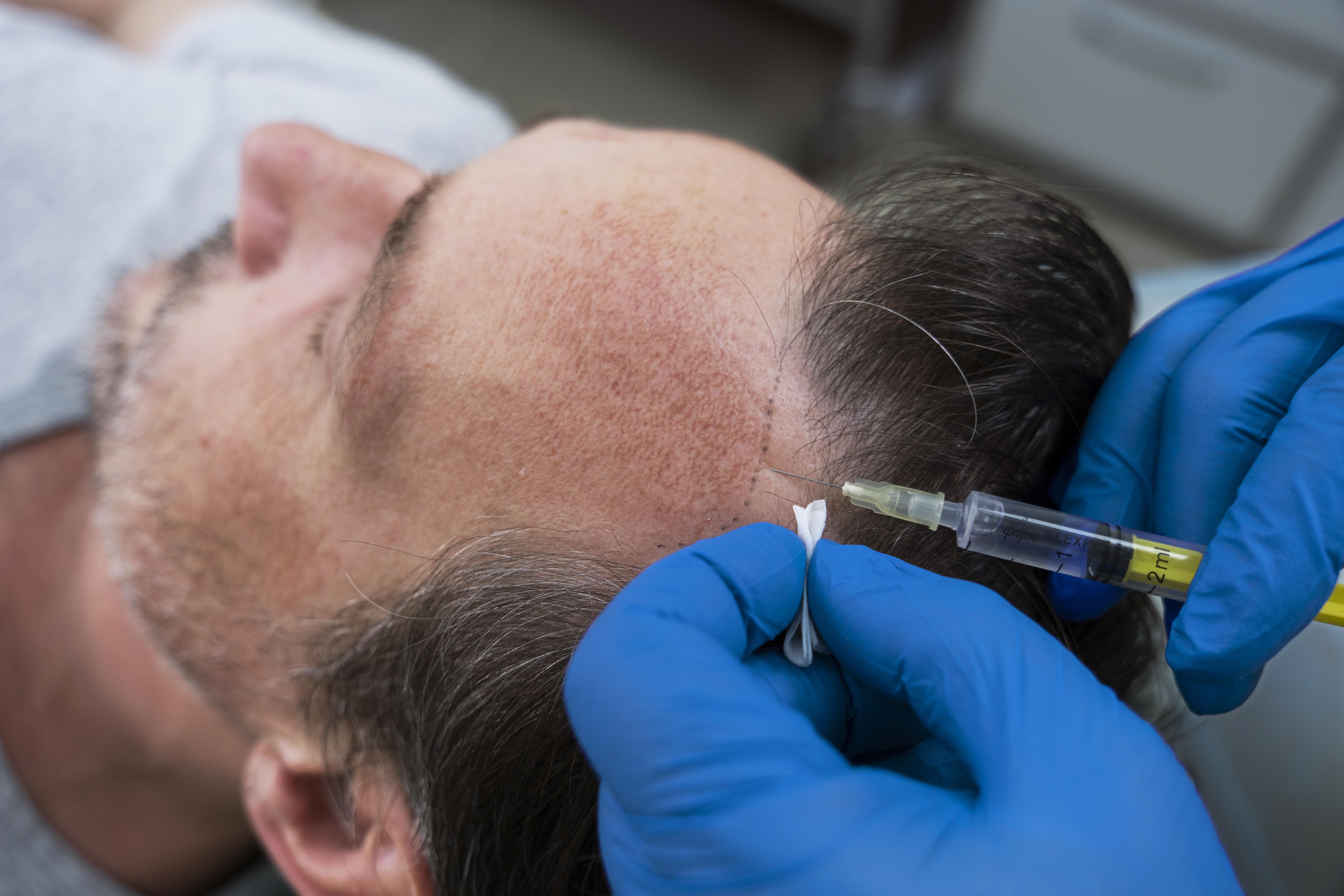Hair loss is a very serious problem nowadays. Many people experience this issue due to various lifestyle factors. These range from stress, pollution to a change in the diet and so on.
The increase in hair loss leads to a decrease in happiness and makes people anxious and depressed. That’s why people are opting for popular treatments like hair PRP and hair transplants.
However, both of these procedures are quite different. So, if you’ve been confused about which one you should opt for, then continue reading below.
What is PRP for Hair Loss?
PRP refers to Platelet-Rich Plasma. This type of plasma is used to stimulate hair growth and fight hair loss. It involves using your own blood. The dermatologist first draws some blood and then centrifuges it. During the centrifugation process, the components of the blood get separated. These components are platelet-rich plasma, platelet-deficient plasma, and red blood cells.
After that, the dermatologist injects the platelet-rich plasma into your scalp. The platelet-rich plasma stimulates the growth of hair follicles with the help of various cytokines and growth factors. You’ll have to visit the dermatologist for a few more hair PRP sessions after your first one, based on their instructions. Each treatment will stabilise and promote the growth of these follicles. These treatments will be spaced at 4-6 weeks each.
What Can You Expect From PRP?
You can expect the following things from PRP:
- Thickening of existing hair
- Slower shedding or hair loss
- A noticeable difference in 3–6 months*
*Note: this timeline will depend on your individual dermal response and is not the same for everyone.
What Are the Pros and Cons of PRP?
PRP therapy has many pros and cons, as seen in the table below.
| Pros of PRP for Hair | Cons of PRP for Hair |
| Non-invasive | Requires multiple sessions |
| Uses body’s natural healing | Not effective for complete baldness |
| Minimal risk of scarring | Results may vary by individual |
| Quick sessions (30–60 mins) | Maybe expensive due to the multiple sessions |
Table 1: Pros and Cons of PRP
Who Should Opt for PRP?
PRP is best for both men and women who are experiencing regular hair fall.
You should consult a dermatologist near you before undergoing the treatment. They will verbally speak with you, and ask questions about the history of your hair loss. After that, they will examine your scalp thoroughly and then inform you about your suitability for the PRP.
Apart from those experiencing regular hair loss, a PRP is also optimal for people experiencing androgenetic alopecia. You can also opt for PRP if you’re afraid of or not interested in surgery, since it’s a non-invasive treatment. Completely bald people, should ideally opt for a hair transplant.
What is Hair Transplant?
A hair transplant involves the moving or removal of hair from the donor area to the thinning or balding areas. It is a surgical procedure that involves two primary techniques, namely FUT (Follicular Unit Transplantation) and FUE (Follicular Unit Extraction).
Let’s understand them in the table below:
| FUT in Hair Transplant | FUE in Hair Transplant |
| Involves a portion of skin from the back of your head being extracted and your scalp being sewn back together | Involves a portion of your scalp being shaved and the removal of hair follicles one by one with a punch device |
| The surgeon then separates the portion of skin into 500-2000 grafts, which begin to grow hair follicles | The doctor then harvests these hair follicles in a petri dish and makes incisions in your scalp |
| These grafts are then implanted back into the bald areas | Finally, the removed and harvested hair follicles are transplanted back onto the thinning areas |
Table 2: FUT vs FUE
What Can You Expect From a Hair Transplant?
You can expect the following results after getting a hair transplant:
- Shedding in the first 2–4 weeks due to the healing process
- New hair growth from the 3rd and 4th months onward
- Full results after several months*.
*Note: the timeline for this will depend on your individual dermal response and is not the same for everyone.
What are the Pros and Cons of Hair Transplant?
Hair transplant has many pros and cons, as seen in the table below:
| Pros of Hair Transplant for Hair | Cons of Hair Transplant for Hair |
| Permanent, visible results | Surgical risks |
| Effective for large bald areas | Higher cost upfront |
| Natural hair regrowth | Longer recovery |
Table 3: Pros and Cons of Hair Transplant
Who Should Opt for a Hair Transplant?
Hair transplant is best for people who are experiencing male pattern baldness or androgenetic alopecia. Some other conditions involve diffuse unpatterned hair loss, and alopecia areata to name a few.
Apart from that, you should opt for this method if you’ve suffered from an accident or been involved in a fire. You can also opt for a hair transplant if you have some lingering problems after previous hair treatments.
Do consult your dermatologist prior to the treatment. They will suggest whether it is right for you or not.
How Do Hair Transplant and PRP Differ?
The differences between hair transplant and hair PRP (PRP capillaire) have been described in the table below:
| Factor | PRP Therapy | Hair Transplant |
| Invasiveness | Non-surgical | Surgical |
| Pain Level | Minimal | Moderate |
| Downtime | Little to none | 1–2 weeks |
| Results Timeframe | Gradual (3–6 months) | Visible after 6–12 months |
| Suitability | Early-stage hair loss | Moderate to advanced loss |
| Repeat Sessions Needed? | Yes (multiple sessions) | Usually one or two procedures |
Table 4: Key Differences Between Hair PRP and. Hair Transplant
Recovery Time & Side Effects
Consider the image below to learn more about the recovery time and side effects of
PRP capillaire and hair transplant:

Infographic 1: Recovery Time and Side Effects of PRP Capillaire vs Hair Transplant
Wrapping Up
Both PRP and hair transplants have advantages when it comes to treating hair loss. However, their effects are different, and they suit different types of people. So, you should make up your mind after considering the information in the preceding sections.
Pick What’s Best for Your Hair Type and Goals
Book a free hair loss consultation with a dermatologist near you to determine whether you need hair PRP or a hair transplant today!


